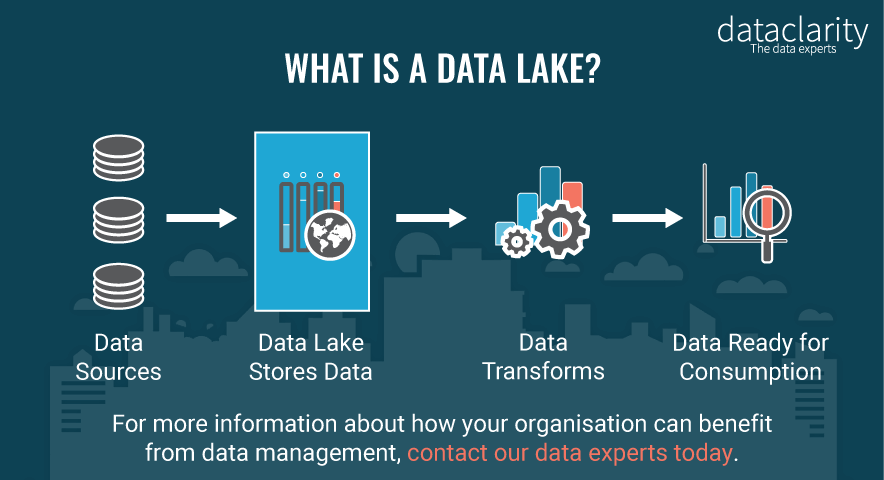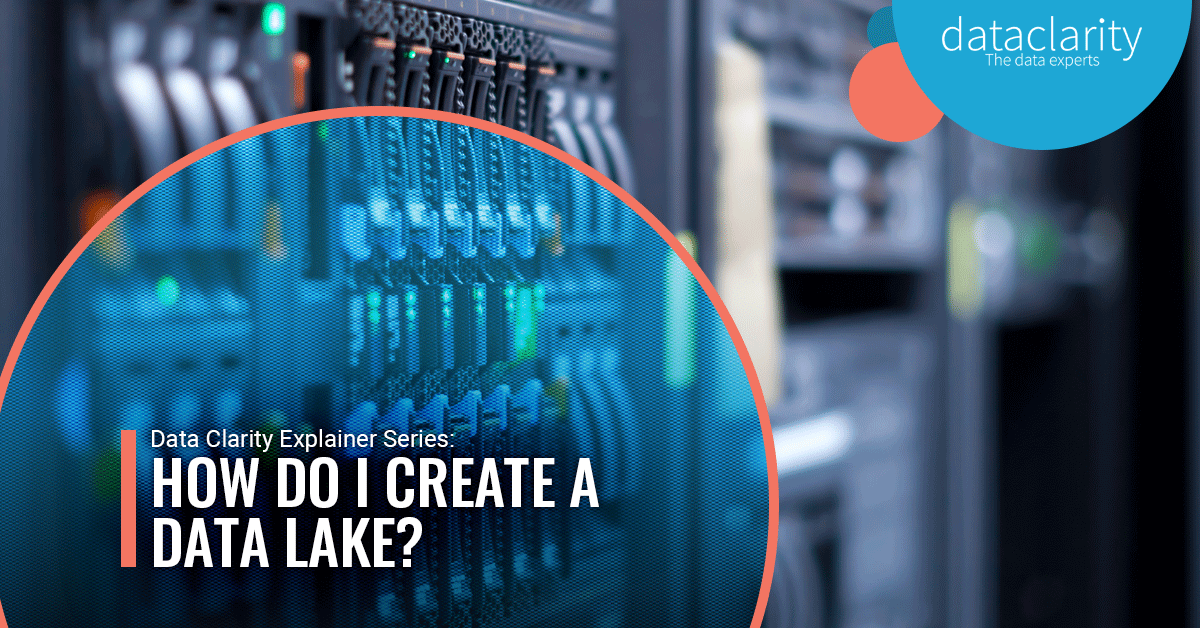How do I create a data lake?
9th September 2020
A data lake is a centralised repository to store all the structured and unstructured data in your organisation. The real advantage of a data lake is the possibility to store data as-is so you can immediately start pushing data from different systems. If you want to know more about what a data lake is, read our explainer article here.
The technical concept behind this is called “schema on read,” which contrasts with a “schema on write” concept. Put simply, either the data is put into a meaningful format upon “writing” to storage, or the data is store with no formatting, and making sense of it is done upon “reading” it later.
Once you have your data available in a data lake, it is possible to process the data later to run different types of analytics and big data processing for data visualisation.

Creating a Data Lake for your Business
To start creating a data lake and making sure that different data sets are added consistently over long periods of time requires a process and automation. To move towards using a data-driven process, the first thing is to select a data lake platform and relevant tools to set up the whole solution.
1. Identify your Data Sources
An important initial step is to identify your data sources and the frequency of data being added to the data lake to build a scope for your solution. This includes noting where your data is currently stored and how it is stored. An example may be your Customer Relationship Management (CRM) software which would typically be structured data, but may also include unstructured data such as images.
Once the data sources are identified, make sure that the decisions are taken to either add the data sets as-is or to do the required level of cleaning and transformation of the data. It is also important to identify the metadata for individual types of data sets.
2. Setup your Cloud Environment
The second step is usually establishing a cloud environment to create your data lake within. You can deploy a data lake on the cloud using server-less services without incurring a huge cost upfront mainly based on the amount of data you put in.
The inherent flexibility of the cloud makes it the perfect environment to establish a data lake which will also provide flexibility as a main benefit.
3. Determine your Processes
Since the data sets are coming from different systems from different departments of the business, it’s important to establish processes for consistency. This is critical to avoid data silos – individual departments having no visibility into data that could be valuable.
For operations that require a higher frequency of data publishing or time-consuming work, it is possible to automate the data sourcing process. This could involve automating the extraction, transformation, and publishing of data to the data lake or at least automate some of the individual steps.
4. Establish Data Governance
After setting up the data lake, it is important to make sure that the data lake is functioning properly. It is not only about putting data into the data lake but also to allow or to facilitate the data retrieval for other systems to generate data-driven informed business decisions. Otherwise, the data lake will end up as a data swamp in the long run with little to no use.
Our data experts can help you establish best practices for managing your data – contact us today for a data audit.
5. Getting Value from the Data Lake (Data Analytics)
At this point, you can implement an ETL (Extract Transform and Load) process to prepare your data for analytics before using it to drive digital transformation and data-driven business decision-making.
This is where the importance of Data Visualization tools come in. You can feed your transformed data from your data lake into a Data Visualization and Analytic tool like ClarityQB to give business users access to the data for making decisions.
What’s Next?
Once you have established a full end-to-end solution, the ongoing task is to draw value from the system. This means getting the answers to business-critical questions. Although this seems obvious, it is an area that will only work with a full buy-in from all levels of business stakeholders.
To get an idea of what your data can unlock for your business, talk to our data experts and arrange an audit of your current processes and environment. We can help you gain a competitive advantage using your data today.
